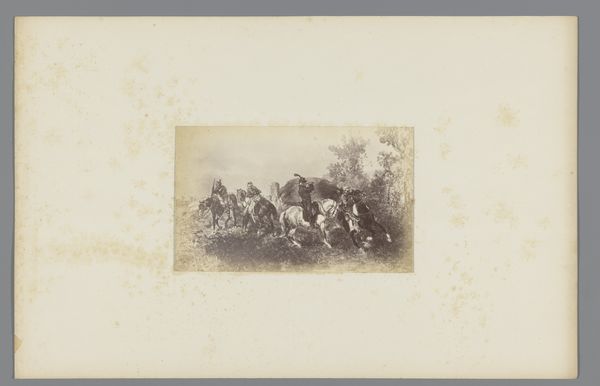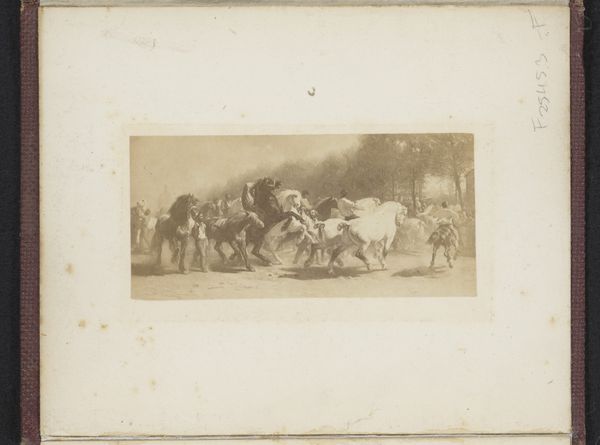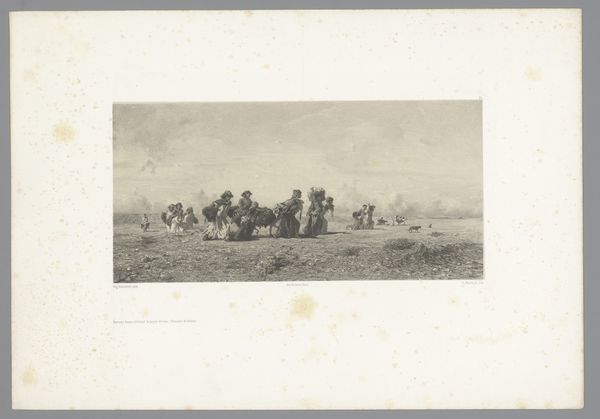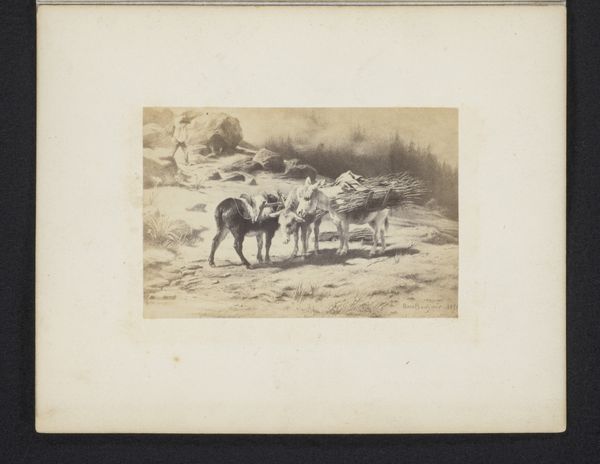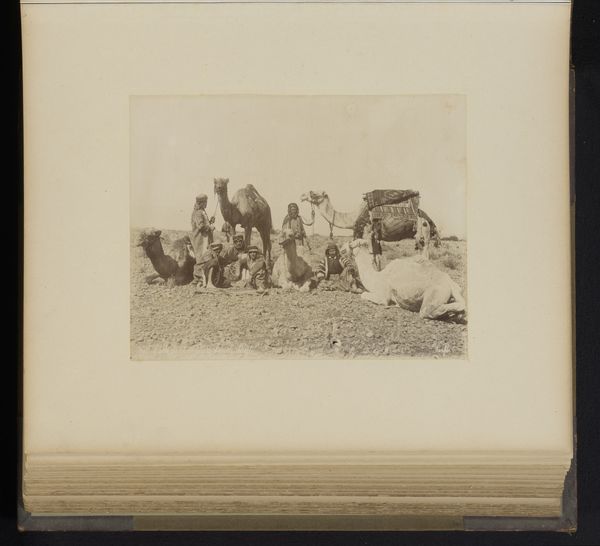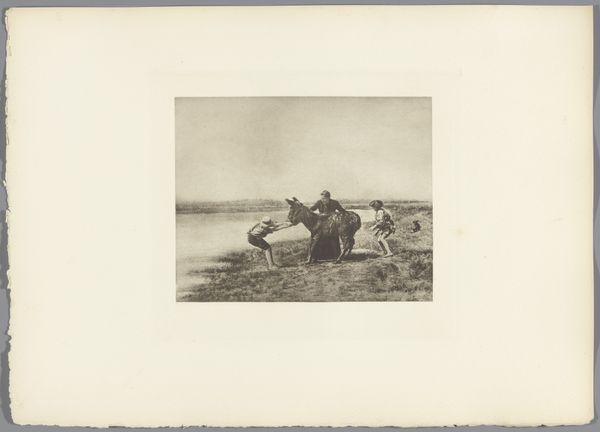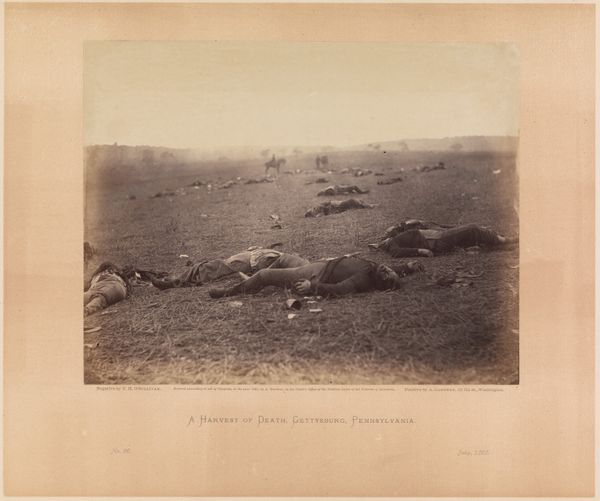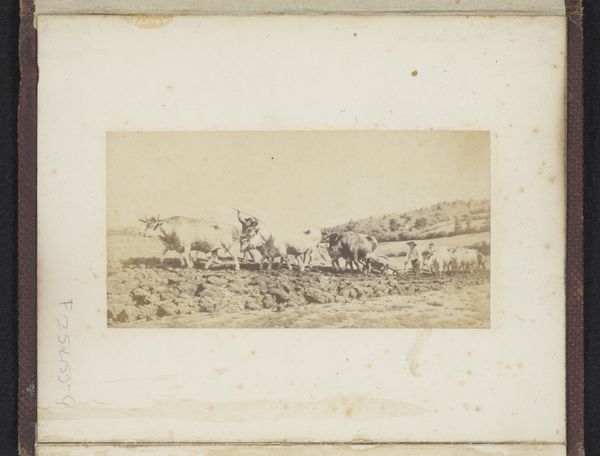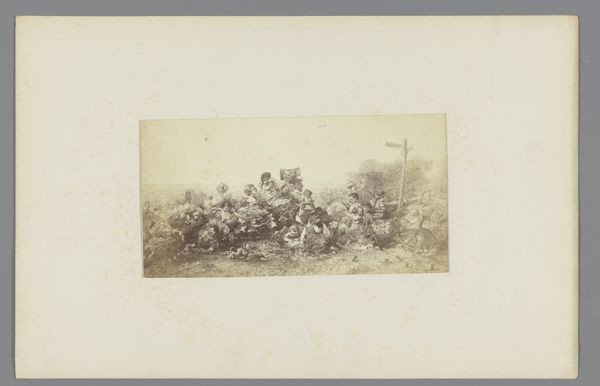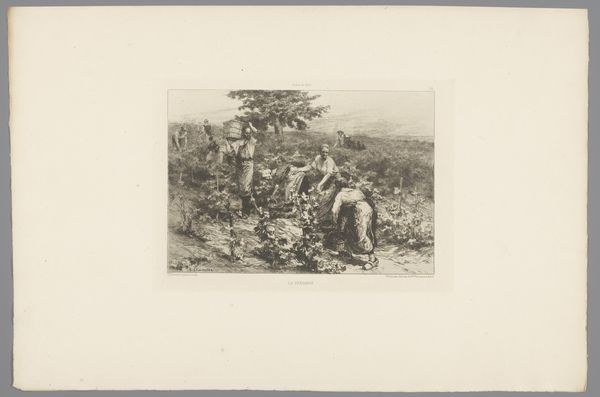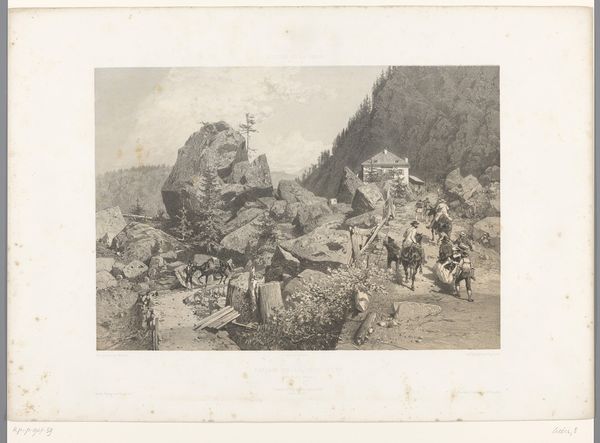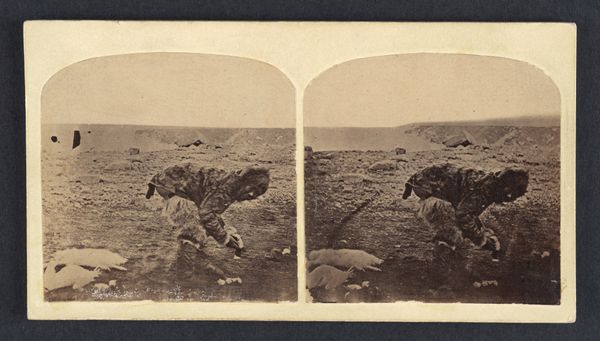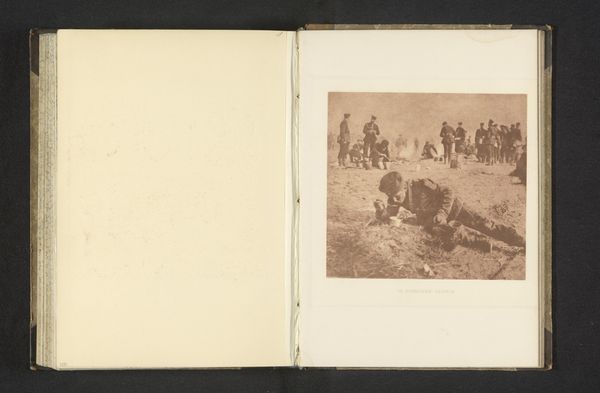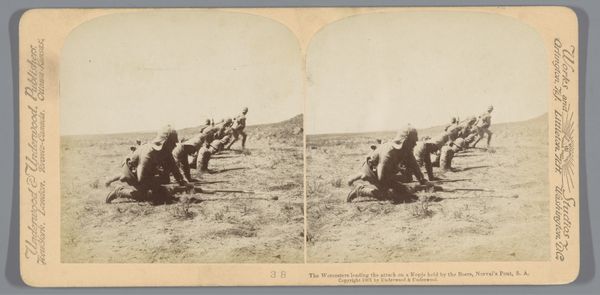
Fotoreproductie van een schilderij van Rosa Bonheur van een schapenherder met zijn kudde op een berg c. 1890 - 1910
0:00
0:00
Dimensions: height 58 mm, width 87 mm
Copyright: Rijks Museum: Open Domain
Curator: Let’s turn our attention to this photo reproduction, created sometime between 1890 and 1910. The original painting is by Rosa Bonheur, depicting a shepherd with his flock atop a mountain. Editor: It's wonderfully evocative! The muted palette gives it a serene quality, almost dreamlike. The way the figures blend with the landscape, the shepherd becoming one with his flock and the rugged terrain, creates an interesting texture with soft contrasts. Curator: Bonheur achieved great fame as a woman artist in the 19th century, recognized especially for her paintings of animals. This image, although a reproduction, gives insight into how her work was consumed by a broader public through photography and printmaking. Consider how reproductions like this democratized art. Editor: Absolutely. The texture here is crucial. You can almost feel the roughness of the rocks and the thickness of the sheeps’ wool. Looking at the print itself, I am fascinated by the materials—the paper, the ink. It highlights the labour involved in its production and its role in circulating images to the masses. How does this object help disseminate the paintings? Curator: This photomechanical print served as a relatively inexpensive means of distributing Bonheur’s artistic vision. These images could circulate amongst the middle class. Its worth noting how Bonheur subverted gender expectations too; a female artist achieving fame with subject matter outside the traditional "feminine" spheres. How would people’s expectations play out? Editor: Exactly! The materials speak to me, reflecting how her artistic achievements and ideas circulated within the public domain. Curator: Indeed, this unassuming photograph offers us layers of insight. It bridges discussions about artistic skill and how gender roles shaped access to particular subjects in painting. Editor: It all gets synthesized together in this fascinating printed landscape. The means of distribution shaped our perceptions and now reshapes how we consider Bonheur today.
Comments
No comments
Be the first to comment and join the conversation on the ultimate creative platform.
